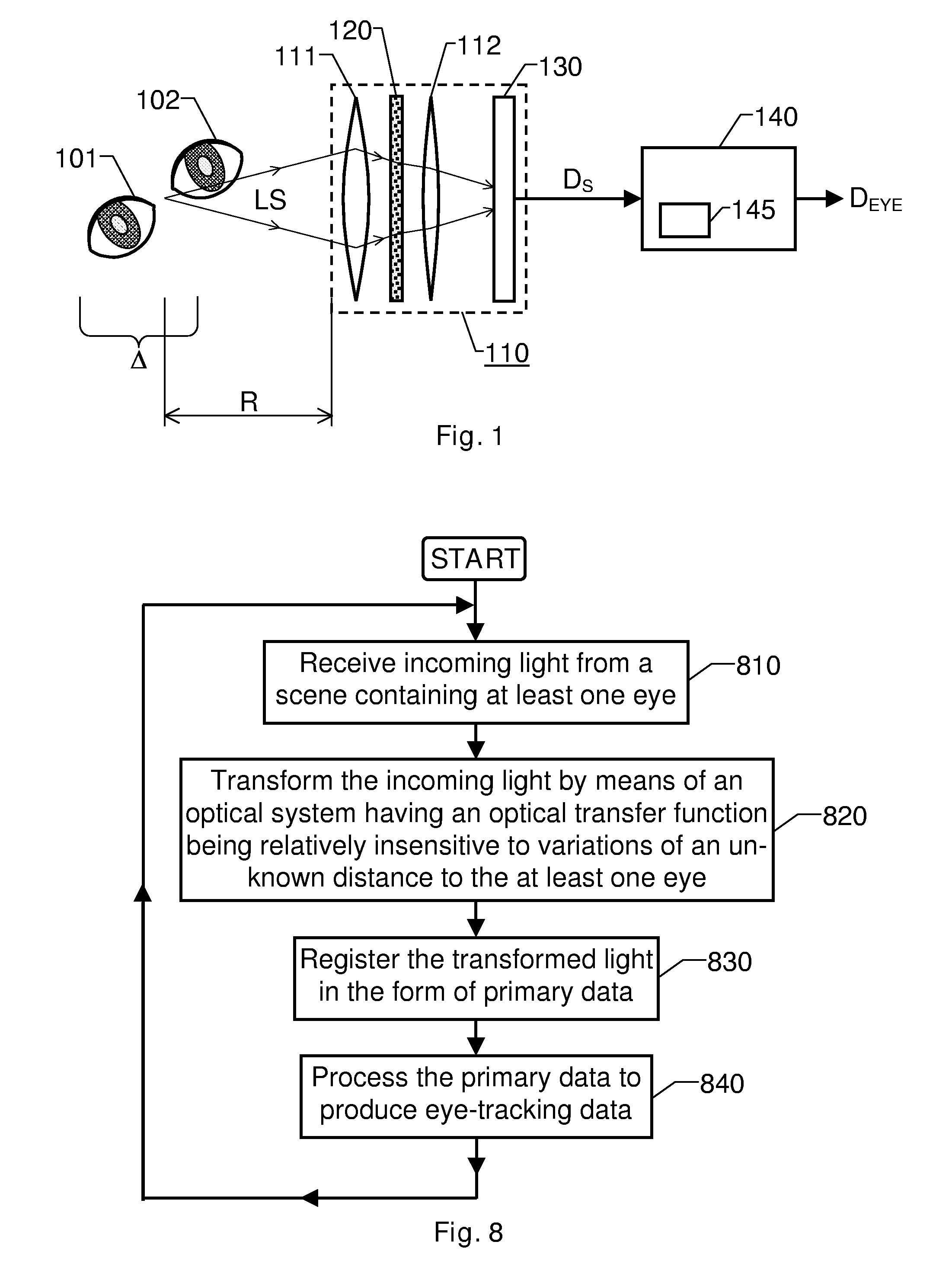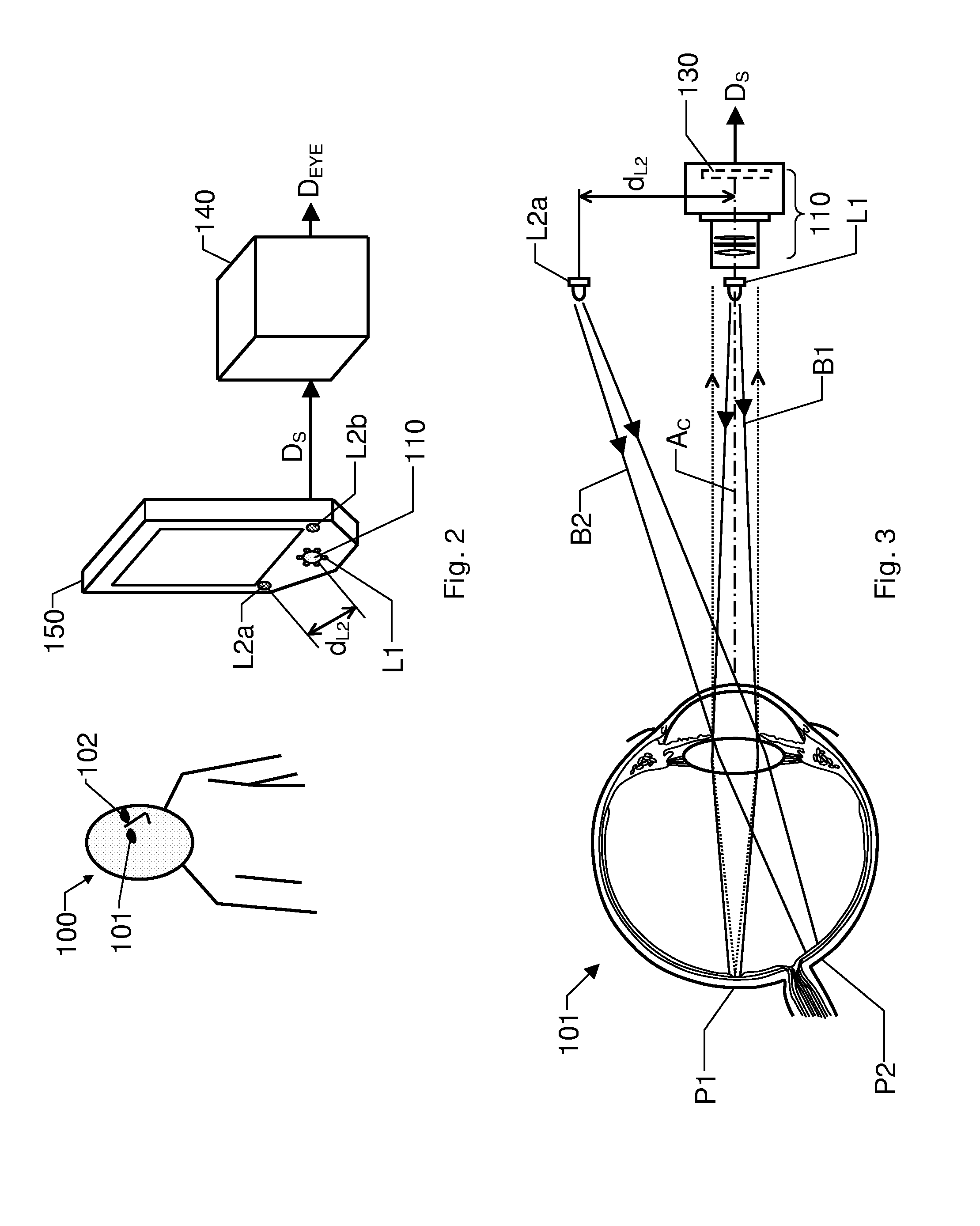Eye Tracker Having an Extended Span of Operating Distances
a technology of eye tracking and operating distance, which is applied in the field of automatic eye tracking, can solve the problems of increasing the performance requirements of the image sensor, reducing the accuracy of the image, so as to achieve reliable automatic eye tracking, reduce the cost, and reduce the effect of manual eye tracking
- Summary
- Abstract
- Description
- Claims
- Application Information
AI Technical Summary
Benefits of technology
Problems solved by technology
Method used
Image
Examples
first embodiment
[0050]FIG. 5 illustrates how a mask 120 according to the invention may be used to benefit from the above-mentioned bright- and dark-pupil effects accomplished by the at least one first light source L1 and the at least one second light source L2a and L2b respectively in the processing performed by the proposed processing device 140.
[0051]In this example, the mask 120 and a lens 113 are adapted to realize a first optical transfer function with respect to light within the first wavelength range λAL-λAU, and realize a second optical transfer function with respect to light within the second wavelength range λBL-λBU. As a result, light within the first wavelength range λAL-λAU is directed towards a first area Al on a sensor surface of the image sensor 130, and direct light within the second wavelength range λBL-λBU is directed towards a second area A2 on the sensor surface.
[0052]For reasons of a clear presentation the first and second optical transfer functions are here symbolized by two ...
second embodiment
[0054]FIG. 6 illustrates how a sensor area of an image sensor 130 is configured according to the invention. Also in this embodiment, the design is intended to enable the processing performed by the processing device 140 to benefit from the bright- and dark-pupil effects accomplished by the at least one first light source L1 and the at least one second light source L2a and L2b respectively.
[0055]Here, however, the sensor 130 has two types of sensor elements, namely a first set of elements 130a wherein each element (symbolized by means of a white square) is adapted to detect light within the first wavelength range λAL-λAU, and a second set of sensor elements 130b wherein each element (symbolized by means of a dark square) is adapted to detect light within the second wavelength range λBL-λBU. Thus, the first set of sensor elements 130a register a first sub-set of the primary data Ds representing bright-pupil information, and the second set of sensor elements 130b register a second sub-...
PUM
 Login to View More
Login to View More Abstract
Description
Claims
Application Information
 Login to View More
Login to View More - R&D
- Intellectual Property
- Life Sciences
- Materials
- Tech Scout
- Unparalleled Data Quality
- Higher Quality Content
- 60% Fewer Hallucinations
Browse by: Latest US Patents, China's latest patents, Technical Efficacy Thesaurus, Application Domain, Technology Topic, Popular Technical Reports.
© 2025 PatSnap. All rights reserved.Legal|Privacy policy|Modern Slavery Act Transparency Statement|Sitemap|About US| Contact US: help@patsnap.com



